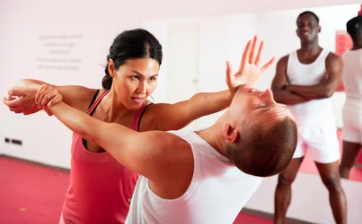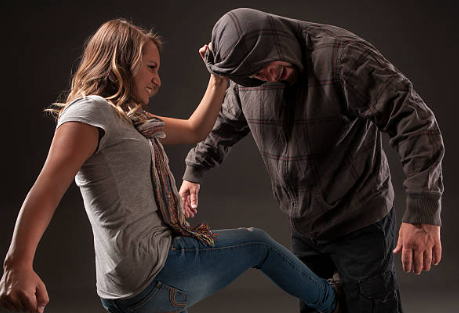Self Defence – The Most Common Attacks. In today’s unpredictable world, self-defence has become an essential skill for individuals from all walks of life. Whether it’s for personal safety or simply to boost one’s confidence, understanding the most common attacks can help individuals prepare and react effectively. This article will explore typical forms of aggression and offer insights into self-defence techniques that anyone can learn.

1. Verbal Attacks
Before physical violence occurs, many confrontations may begin with verbal assaults. These can range from insults and threats to harassment or intimidation. Understanding how to de-escalate a situation verbally can be a crucial first step in self-defence. Individuals should learn to remain calm, assert boundaries, and avoid engagement in a potential cycle of aggression.
Self-Defence Tip:
Practice assertive communication. Techniques such as using a firm voice, maintaining eye contact, and employing body language that conveys confidence can sometimes disarm an aggressor without physical confrontation.
2. Physical Assaults

Physical assaults are the most recognizable forms of violence and can include pushing, hitting, or more severe actions like choking or weapon attacks. Generally, these types of assaults can happen in various environments, including public places, homes, or during altercations in social settings.
Common Types of Physical Attacks:
- Shoving or pushing: Often an aggressor’s first step towards escalating violence.
- Striking: Punches or slaps aimed at causing physical harm.
- Choking or holding: Restricting movement or breathing, often in close-range encounters.
Self-Defence Tip:
Basic self-defence training can equip individuals with techniques to escape from a physical attack. Techniques such as breaking free from grips, using leverage, and exploiting vulnerabilities (like the eyes, groin, or knees) are practical skills to learn.
3. Mugging or Theft
Muggings involve attackers looking to steal belongings while often using intimidation or violence. Victims may be approached from behind, confronted directly, or ambushed in less populated areas. Muggings primarily target valuables like wallets, purses, and electronics.
Self-Defence Tip:
Awareness is your best defence. Staying vigilant and recognizing suspicious behavior can help in avoiding dangerous situations. If confronted, it’s often advisable to remain calm, comply with demands, and prioritize personal safety over possessions.
4. Sexual Assault
Sexual assault is an egregious form of violence that can take many forms, from unwanted physical contact to rape. It often occurs in situations where victims feel vulnerable, such as late at night or in isolated areas.
Self-Defence Tip:
While physical self-defence tactics can be crucial in these situations, prevention is paramount. Informing trusted friends of your whereabouts, avoiding secluded areas when possible, and utilizing self-defence tools like pepper spray can enhance personal safety. Additionally, programs specifically addressing self-defence against sexual assault teach effective techniques and strategies.
5. Road Rage
Incidents of road rage can escalate quickly, leading to verbal or physical confrontations between drivers. Factors like tailgating, cutting someone off, or aggressive gestures can trigger retaliatory actions, often leading to dangerous situations.
Self-Defence Tip:
If faced with road rage, it’s wise to avoid eye contact and resist the urge to retaliate. When possible, remove yourself from the situation by safely changing lanes or exiting the highway. Prioritize safety, and in severe instances, don’t hesitate to call law enforcement.
Final Thoughts
Self Defence – The Most Common Attacks. The importance of self-defence cannot be overstated. By understanding the most common attacks and preparing accordingly, individuals can enhance their ability to react appropriately in dangerous situations. Investing time in self-defence training can bolster one’s confidence and potentially save lives. Remember, the ultimate goal of self-defence is not to engage in combat but to protect oneself and escape harm whenever possible. Stay informed, practice vigilance, and empower yourself with knowledge and skills that could make all the difference.
Most attacks begin with a verbal assault or some kind of verbal exchange, but not all. Be aware that verbal exchanges can and do lead to physical assault and by knowing how to de-escalate you can avoid a potentially dangerous situation from arising in the first place.
Checkout this video which demonstrates some “verbal jujitsu:
It’s also worth knowing the rules regarding self defence and law in the Uk.
